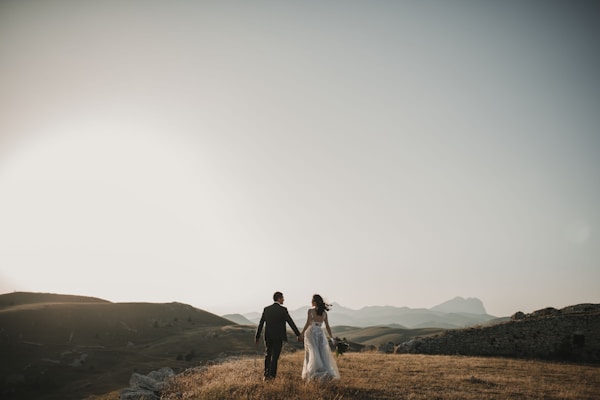Choosing the Perfect Closure for Your Wedding Dress Design: A Comprehensive Guide
Introduction
Your wedding day is one of the most memorable events in your life, and every detail matters, especially your wedding dress. While selecting the perfect fabric, style, and embellishments are crucial, one of the often overlooked aspects is the closure of the wedding dress. How do you choose the right closure for a wedding dress design? This guide will delve into the various types of closures available, their pros and cons, and provide you with tips to help make the best choice for your special day.
Understanding Wedding Dress Closures
Wedding dress closures play a vital role in the overall functionality and aesthetic of the gown. The right closure not only ensures that the dress fits perfectly but also complements the design and style of the dress. Here, we will explore the most common types of closures used in wedding dress designs.
The Most Common Types of Closures
| Closure Type | Description | Pros | Cons |
| Zip Closure | A hidden zipper, usually placed at the back of the dress. | Easy to wear, provides a sleek finish, adjustable fitting. | May not suit every style, zippers can break over time. |
| Button Closure | Buttons, often decorative, used for fastening at the back. | Adds a classic touch, customizable, secure fit. | Can take time to fasten/unfasten, may require a helper. |
| Lace-Up Closure | A corset-style lace that ties at the back. | Highly adjustable, great for hourglass figures, adds a romantic feel. | Can be tricky to tighten evenly, requires some practice. |
| Hook and Eye Closure | A simple hook that attaches to an eye on the other side. | minimalistic, easy to conceal. | Less secure than other options, ideal for lightweight dresses. |
Factors to Consider in Choosing the Right Closure
Choosing the right closure involves more than just aesthetics; several factors need to be considered to ensure a perfect fit and comfort on your special day.
1. Dress Style and Design
The style of your wedding dress is paramount in deciding the closure type. For example, a form-fitting mermaid gown may benefit from a lace-up closure for that perfect snug fit, while a flowing A-line dress may work well with a traditional zip or button closure.
2. Fabric and Weight of the Dress
The fabric of your dress plays a crucial role in determining the right closure. Heavy fabrics may require a more secure closure, such as buttons or zippers, while lightweight fabrics may be well-suited for hook and eye or lace-up options. Consider the formality of the fabric as well; a satin dress may warrant a more elegant closure compared to a casual tulle design.
3. Body Type and Comfort
Your body type is uniquely yours, and the closure should reflect that. Lace-up closures are excellent for brides with an hourglass figure, allowing for easy adjustments to accentuate curves. On the other hand, if you prefer a looser fit, a zip closure may be more suitable. The comfort level should never be underestimated; ensure that the closure you choose allows ease of movement throughout the day.
4. Ease of Wear
We all know how anxious the wedding morning can be. If you are getting ready alone, you may want to consider a bridal gown with an easy zipper or hook closure. If your dress has buttons or a lace-up design, having a trusted friend or bridesmaid to assist might be necessary. Planning for ease of wear can make a significant difference on your big day.
5. Aesthetics and Overall Theme
The closure of your gown should not only be functional but should also enhance the overall look of your dress. For gowns with a vintage or classic theme, buttons might be the perfect addition, whereas a modern or minimalist gown may look striking with a hidden zipper. Always keep your wedding theme in mind when making your closure choice.
Maintenance and Care of Closures
After choosing the right closure, it's essential to consider how to maintain it to ensure the longevity of your wedding dress. Here are some tips:
1. Regular Checks
It is advisable to regularly check the integrity of closures. If you notice any wear or tear, get it repaired immediately to avoid last-minute issues.
2. Proper Storage
When storing your wedding dress after the big day, hang it appropriately. Avoid heavy-duty hangers that could stretch the fabric or closure. Instead, use a padded hanger that provides support without adding unnecessary pressure to the closure area.
3. Cleaning
Follow the care instructions advised by your dressmaker. Zippers might need to be cleaned regularly to prevent dirt buildup, while button closures should be checked for loosening over time.
Conclusion: Make Your Closure Count
When it comes to choosing the right closure for your wedding dress design, it's crucial to consider various factors, including dress style, material, body type, and overall theme. The closure should complement your design while catering to your comfort and practicality. Remember that your wedding dress is an extension of your personality, and every detail, including the closure, should reflect who you are. Often, it is the little things that make a significant difference, so don’t overlook the importance of this decision. Take your time, involve a trusted confidant in the decision-making process, and savor every moment as you prepare for one of the most essential days of your life.
